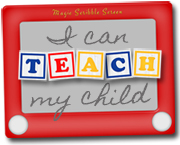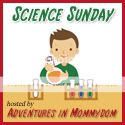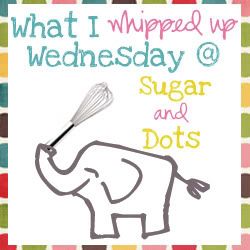Week 1: We drew cells and looked at cells under a microscope.
I recently checked out the book The Way We Work by David Macaulay from the library in my search for a children's book about cells. The explainations are well done and the illustrations facilitate understanding. I like that the explanations begin with cells under a microscope, move into atoms and then explain how atoms are incorporated into cells. Since the concept of cells is difficult to understand we will be doing an activity a week inconjunction with the pages of the book.
The first week we began with a very simple project. The kids looked at cells in several different books and then drew one of their own. We talked about how the DNA stored in the nucleus is like a cookbook. Each person has their own unique version which contains directions on how to build them. Each recipe contains the instructions for a different dish just as there are instructions for many different kinds of cells. Only the directions that are needed are used.
They labeled their cells and then we looked at some cell slides under our microscope.
Speed! Celebration Sale - Multiplication Game
Speed! has been selling extremely well at Amazon. Children and parents are having fun learning multiplication skills together, and we wish to thank those of you who are playing and enjoying this game.
With the start of the new school year, we thought it would be a good time to celebrate with a big sale.
For the next two weeks (Saturday, September 22, 2012 - Saturday, October 6, 2012) you can get Speed! for only $16. It's fun, affordable, educational, and it makes a great birthday or Christmas gift!

With the start of the new school year, we thought it would be a good time to celebrate with a big sale.
For the next two weeks (Saturday, September 22, 2012 - Saturday, October 6, 2012) you can get Speed! for only $16. It's fun, affordable, educational, and it makes a great birthday or Christmas gift!

Fair Isle Sweater
One way I encourage the kids to do crafts is to do them myself. Knitting is a hobby of mine and for some reason I really like knitting sweaters. For me seeing progress and bringing my project to completion is very rewarding.
Here is the body and arms of a fair isle sweater I finished just before Jemma got sick.
Here is the body and arms of a fair isle sweater I finished just before Jemma got sick.
Speed! - Number Sense - Factoring Algebraic Expressions
Speed!
is a fun game for learning multiplication, but playing Speed! also
helps children develop a strong number sense. This is the fourth post in
a series of posts - Speed! Number Sense - to explore different mathmatical concepts and how playing Speed! can facilitate understanding of these concepts.
The fourth concept is FACTORING ALGEBRAIC EXPRESSIONS. When children play Speed! they begin to notice that some decks have the same numbers as other decks. That knowledge is an incredible aid in determining the least common denominator.
The first step is to factoring the equation is to find two numbers which multiply together to equal 28. Children who have played a lot of Four Speed and Seven Speed should recognize that both decks contain a 28.
 ---------------------------------------------------------------------------------------------------------
---------------------------------------------------------------------------------------------------------
The next step would be to find the combination of numbers which when multiplied together equal 12, and when added together equal 8.
The answer is 2 and 6, and therefore the equation can be factored as shown above.
Playing Speed! doesn't teach algebra, it is an activity that helps with multiplication and creates an excellent foundational number sense within children who play. It simply makes higher levels of math easier.
The fourth concept is FACTORING ALGEBRAIC EXPRESSIONS. When children play Speed! they begin to notice that some decks have the same numbers as other decks. That knowledge is an incredible aid in determining the least common denominator.
The first step is to factoring the equation is to find two numbers which multiply together to equal 28. Children who have played a lot of Four Speed and Seven Speed should recognize that both decks contain a 28.
The next step would be to check if the two numbers add to 11 to create the coefficient in front of the x. They do, and therefore the equation factors to.

Of course it is not always quite so simple.
This equation contains a 12. The first step is to find two numbers which multiply together to equal 12. Children who have
played a lot of Speed should recognize that 12 is a card in several Speed! decks. In fact Two, Three, Four and
Six Speed all contain the number 12.
The next step would be to find the combination of numbers which when multiplied together equal 12, and when added together equal 8.
The answer is 2 and 6, and therefore the equation can be factored as shown above.
Playing Speed! doesn't teach algebra, it is an activity that helps with multiplication and creates an excellent foundational number sense within children who play. It simply makes higher levels of math easier.
Long Division
Teaching my son long division has been a big challenge full of frustration, yelling, crying and trying. It took quite a while before he was ready for the challenge, and then once he was it took several days before he got it. The entire process took about a week, but in the end he got it! Here is how we did it.
Background
I knew he was ready for long division. We have blasted past it a few times as it was explained in the Life of Fred curriculum we are using. He can divide small numbers in his head and knows most of his math facts. Long division was the next big milestone. Finally he was requested to do a problem in his book. That's when the fun started.
My son is a child who learns best by figuring things out on his own. He is very visual and sometimes learns by reading, but telling him what to do almost never works. For me that creates an extra challenge.
Our Method
Money is something we can all relate to, so we divided money. Each day I gave my son some 10's, 1's, dimes, and pennies and asked him to divide the money between 3 people. These units were used because they coordinate directly to place value. No quarters, nickels or 5 dollar bills were used or allowed.
After he divided the actual money we did the same problem with paper. On the paper we wrote down divide, multiply, subtract, bring down so he could remember the steps and relate them to the paper money. Now because my son is a figure it out kind of kid, I gave him a second quantity of money and asked him to divide the money and do the problem on paper by himself.
This process was repeated about four days in a row. Each day I would do a problem with him and then ask him to do one on his own. We always divided by 3, and always used 10's, 1's, dimes and pennies to divide amounts of money such as $55.41. The first two days were very long. He worked on his problem for most of the morning before I asked if he would like me to finish it for him.
Each day he was able to get a little farther in the process. He also began to see the correlation between the money and the paper. He realized when he only had two dimes and needed to trade them for pennies was the same as when he subtracted and was left with a 2. By the end he was able to do a problem on his own in less than 10 minutes.
Once he understood this we added a bit of variation. We divided a large number such as 1,452,324 by 3. Then we tried a problem divisible by 5. By then he had it.
Wow! How did you teach long division?

China History Co-op. Books
In conjunction with our China History Co-op we read many wonderful living books. Here are our favorites listed in order of Ancient Chinese dynasty.
Geography
The Story About Ping is a classic children's book about a duck who lives on the Yantze River. One night, for fear of getting in trouble, he doesn't go home and spends the night alone. After an adventurous night including a close call the story has a happy ending. This engaging story is recommended by many homeschooling curriculums such as Five in a Row and definitely a favorite in my family.
The Five Chinese Brothers is an Ancient Chinese legend about five brothers who looked exactly alike.
Timeline
The Legend of the Kite: A Story of China by Chen Jiang Hong - The illustrations in this book provide glimpses into Chinese life in the past. The story is set in Bejiang at the Forbidden City. The story explains how kite flying got its start through a tale appropriate for young children. My 5, 8 and 10 year olds all enjoyed this story.
Xia
Tikki Tikki Tembo is personally one of my favorites on the list because my mother read it to me as a child. It tells the story of why the Chinese have short names.
Shang
Ten Suns is an Ancient Chinese legend which explains why we have one sun in the sky.
Zhou
Confucius: The Golden Rule - This is a biography of Confucius. My 5th grader read it on her own, and it was quite a challenge for my 3rd grader. We didn't quite make it through the entire book.
Qin
The Great Wall of China - This book tells the story of how the Great Wall was built in a story format. It's easy to read in a single sitting and excellent.
Cat and Rat is a legend of how the first Zodiac was introduced into China by the first emperor Huang Di.
Han
The Silk Route: 7000 Miles of History - (Yuang Dynasty) This book was somewhere in between a living book and a fact book. It was fairly easy to read and we learned about the different cities along the silk route. It is recommended by the Story of the World series of books.
The Emperor and the Kite is a story about how the youngest daughter of the emperor, seen as insignificant, ends up saving his life.
Tang
Empress of China: Wu Ze Tian is the story of China's only female emperor.
Song
The Lost Horse is a legend about how a twist of fate can save a life. It is set during the Mongol invasion of China.
Liang and the Magic Paintbrush is an ancient Chinese legend about how strange things happen when a poor wandering boy gets a magic paintbrush.
Yuan
Genghis Khan and the Mongol Horde - (Yuang Dynasty) This story was a great transition from the Sythians into Ancient China. Since Genghis was a Mongol the story begins there. The Mongols lived in Yurts and were great horsemen, very similar to the Scythians. This adventurous story was fun and entertaining for both my eight and ten year olds and is on the reading list for the Sonlight curriculum.
Ming
Beautiful Warrior is a legend which explains how Kung Fu is much more than just a fighting activity.
Ms. Frizzle's Adventures in Imperial China is a Magic School Bus story about time traveling to ancient China. The book is filled with many tidbits regarding Chinese inventions and ways of life in different parts of the empire.
Republic
The Chinese Violin is a story about immigration to America.
To read more about our homeschool history co-op activities click on Homeschool History under Homeschooling Topics on the right-hand side of the blog, or one of the cultures below.
Celts
Vikings
Scythians
Ancient China

Geography
The Story About Ping is a classic children's book about a duck who lives on the Yantze River. One night, for fear of getting in trouble, he doesn't go home and spends the night alone. After an adventurous night including a close call the story has a happy ending. This engaging story is recommended by many homeschooling curriculums such as Five in a Row and definitely a favorite in my family.
The Five Chinese Brothers is an Ancient Chinese legend about five brothers who looked exactly alike.
Timeline
The Legend of the Kite: A Story of China by Chen Jiang Hong - The illustrations in this book provide glimpses into Chinese life in the past. The story is set in Bejiang at the Forbidden City. The story explains how kite flying got its start through a tale appropriate for young children. My 5, 8 and 10 year olds all enjoyed this story.
Xia
Tikki Tikki Tembo is personally one of my favorites on the list because my mother read it to me as a child. It tells the story of why the Chinese have short names.
Shang
Ten Suns is an Ancient Chinese legend which explains why we have one sun in the sky.
Zhou
Confucius: The Golden Rule - This is a biography of Confucius. My 5th grader read it on her own, and it was quite a challenge for my 3rd grader. We didn't quite make it through the entire book.
Qin
The Great Wall of China - This book tells the story of how the Great Wall was built in a story format. It's easy to read in a single sitting and excellent.
Cat and Rat is a legend of how the first Zodiac was introduced into China by the first emperor Huang Di.
Han
The Silk Route: 7000 Miles of History - (Yuang Dynasty) This book was somewhere in between a living book and a fact book. It was fairly easy to read and we learned about the different cities along the silk route. It is recommended by the Story of the World series of books.
The Emperor and the Kite is a story about how the youngest daughter of the emperor, seen as insignificant, ends up saving his life.
Tang
Empress of China: Wu Ze Tian is the story of China's only female emperor.
Song
The Lost Horse is a legend about how a twist of fate can save a life. It is set during the Mongol invasion of China.
Liang and the Magic Paintbrush is an ancient Chinese legend about how strange things happen when a poor wandering boy gets a magic paintbrush.
Yuan
Genghis Khan and the Mongol Horde - (Yuang Dynasty) This story was a great transition from the Sythians into Ancient China. Since Genghis was a Mongol the story begins there. The Mongols lived in Yurts and were great horsemen, very similar to the Scythians. This adventurous story was fun and entertaining for both my eight and ten year olds and is on the reading list for the Sonlight curriculum.
Ming
Beautiful Warrior is a legend which explains how Kung Fu is much more than just a fighting activity.
Ms. Frizzle's Adventures in Imperial China is a Magic School Bus story about time traveling to ancient China. The book is filled with many tidbits regarding Chinese inventions and ways of life in different parts of the empire.
Republic
The Chinese Violin is a story about immigration to America.
To read more about our homeschool history co-op activities click on Homeschool History under Homeschooling Topics on the right-hand side of the blog, or one of the cultures below.
Celts
Vikings
Scythians
Ancient China

China History Co-op - Writing Assignments
A writing assignment was given most weeks of the China History Co-op. The children presented their work the week following the assignment.
Here are the assignments:
1. Write a diary as if you are Ping (from the book The Story about Ping). The diary could be before, during or after his experience alone for the night. Remember his thoughts and feelings are very important in a diary.
2. Make your own personal timeline. You could include births of grandparents, parents, siblings and other important events in your history such as; day you moved to a new house, day you started swim lessons, or the day you first cooked an egg by yourself.
3. Xia Dynasty - Write instructions for constructing a clay pot from finding the clay to using or selling the pot.
4. Shang Dynasty - Write a fictional story which includes the six elements we discussed from the Shang Dynasty (wood writing, chariots, silk, oracle bones, tortoise shell writing, bronze, jade and ivory carvings) and any other inventions or events from the Shang dynasty you would like.
5. Zhou - Using the internet, translate your first or middle name into Chinese and write your own wise saying (a Confucius saying).
6. Qin - If you were the Emperor of China write about how you would run your country.
7. Han - The Silk Route: Pretend you are an artist who created a silk painting. Your painting will travel down the silk road and be traded for goods. Write the story of your painting.
8. 3 Kingdoms - Create a Venn diagram to show what the three belief systems of China have in common; Buddism, Confuciusism, and Daoism
9. Tang - Write a Haiku to share next week.
10. Song - Write about your four treasures.
To read more about our homeschool history co-op activities click on Homeschool History under Homeschooling Topics on the right-hand side of the blog, or one of the cultures below.
Celts
Vikings
Scythians
Ancient China
Here are the assignments:
1. Write a diary as if you are Ping (from the book The Story about Ping). The diary could be before, during or after his experience alone for the night. Remember his thoughts and feelings are very important in a diary.
2. Make your own personal timeline. You could include births of grandparents, parents, siblings and other important events in your history such as; day you moved to a new house, day you started swim lessons, or the day you first cooked an egg by yourself.
3. Xia Dynasty - Write instructions for constructing a clay pot from finding the clay to using or selling the pot.
4. Shang Dynasty - Write a fictional story which includes the six elements we discussed from the Shang Dynasty (wood writing, chariots, silk, oracle bones, tortoise shell writing, bronze, jade and ivory carvings) and any other inventions or events from the Shang dynasty you would like.
5. Zhou - Using the internet, translate your first or middle name into Chinese and write your own wise saying (a Confucius saying).
6. Qin - If you were the Emperor of China write about how you would run your country.
7. Han - The Silk Route: Pretend you are an artist who created a silk painting. Your painting will travel down the silk road and be traded for goods. Write the story of your painting.
8. 3 Kingdoms - Create a Venn diagram to show what the three belief systems of China have in common; Buddism, Confuciusism, and Daoism
9. Tang - Write a Haiku to share next week.
10. Song - Write about your four treasures.
To read more about our homeschool history co-op activities click on Homeschool History under Homeschooling Topics on the right-hand side of the blog, or one of the cultures below.
Celts
Vikings
Scythians
Ancient China
China History Co-op. Week 11 - Ming Dynasty
Week 11: We painted China vases.
The last day of our China history co-op occurred three days after my daughter's Leukemia diagnosis so I was not able to attend. My two older children were able to go and I asked my 10 year old daughter to write about the lesson. Here is what she had to say. (I did do some editing to make it easier to read.)
First we read our assignments Chinese style. Then we saw pictures of Ming dynasty vases and learned how archaeologists could tell if the vase was from the Ming or the Tang dynasty. They could tell by the presence of a chemical in the blue paint and by how many layers of paint were on the vase. The Chinese added one, two or three layers of blue paint to make it look more 3d. One vase was odd shaped and sold to America for at least 1 million dollars of taxes.
Then we painted vases with several different shades of blue paint. The paint was blue because that was all the Chinese had.
After the lesson, the wonderful ladies from the history co-op stopped by the hospital for a visit. They dropped off a vase for Jemma to paint and she asked to paint it right away.

The last day of our China history co-op occurred three days after my daughter's Leukemia diagnosis so I was not able to attend. My two older children were able to go and I asked my 10 year old daughter to write about the lesson. Here is what she had to say. (I did do some editing to make it easier to read.)
First we read our assignments Chinese style. Then we saw pictures of Ming dynasty vases and learned how archaeologists could tell if the vase was from the Ming or the Tang dynasty. They could tell by the presence of a chemical in the blue paint and by how many layers of paint were on the vase. The Chinese added one, two or three layers of blue paint to make it look more 3d. One vase was odd shaped and sold to America for at least 1 million dollars of taxes.
Then we painted vases with several different shades of blue paint. The paint was blue because that was all the Chinese had.
After the lesson, the wonderful ladies from the history co-op stopped by the hospital for a visit. They dropped off a vase for Jemma to paint and she asked to paint it right away.

Speed! - Number Sense - Simplifying Algebraic Expressions
Speed!
is a fun game for learning multiplication, but playing Speed! also
helps children develop a strong number sense. This is the third post in
a series of posts - Speed! Number Sense - to explore different mathmatical concepts and how playing Speed! can facilitate understanding of these concepts.
The third concept is SIMPLIFYING ALGEBRAIC EXPRESSIONS. When children play Speed! they quickly become familiar with the numbers in the decks. Then the numbers become associated in their mind. When a child who has played a lot of Speed! to learn the multiplication tables begins simplifying algebraic expressions, the number sense helps tremendously.
For example, each of the coefficients in this algebraic expression are in Four Speed. Four Speed contains the numbers 4, 8, 12, 16, 20, 24, 28, 32, 36 and 40.
It simplfies to:
Playing Speed! doesn't teach algebra, it is an activity that helps with multiplication and creates an excellent foundational number sense within children who play. It simply makes algebra a little easier.
The third concept is SIMPLIFYING ALGEBRAIC EXPRESSIONS. When children play Speed! they quickly become familiar with the numbers in the decks. Then the numbers become associated in their mind. When a child who has played a lot of Speed! to learn the multiplication tables begins simplifying algebraic expressions, the number sense helps tremendously.
For example, each of the coefficients in this algebraic expression are in Four Speed. Four Speed contains the numbers 4, 8, 12, 16, 20, 24, 28, 32, 36 and 40.
A child given the task to simplify the expression
would recognize that 4, 12 and 32 were cards in Four Speed. 4 was the
first card, 12 was the third card, and 32 was the eighth card. Therefore the expression could be
reduced to:
------------------------------------------------------------------------------------------------ Playing Speed! doesn't teach algebra, it is an activity that helps with multiplication and creates an excellent foundational number sense within children who play. It simply makes algebra a little easier.
Fabric Flowers Version 2
Grandma pulled a new fabric flower template out of her stash today. She and the girls have had a lot of fun making fabric flowers over the last month and now they have a new kind to construct. These are just as cute and slightly more advanced. Nevertheless, my five year old is able to participate in most of the process.
First the template is placed on the fabric.
Then both the fabric and template are folded.
Folding is continued.
Excess fabric is trimmed off.
One stitch is put through the pointed end to add it to the group.
A pin is placed through the middle of the group to hold it together in a neat stack.
Once around 18 are placed onto the thread the middle pin is removed.
The flower is tied into a circle.
The fabric is opened up and.......
Voila! A new flower to adorn a headband, shirt, cuff of capris, quilt or anything else you like.
* I did not receive any compensation for this recommendation. I'm just a homeschooling mom who has found many products that I like. If you're interested in the products I recommend on this blog I want to make it easy for you to find them.
** I am an Amazon associate and receive a small portion of the sales on orders made after clicking in from this site, which I promptly spend on homeschooling books and supplies for my children.
First the template is placed on the fabric.
Then both the fabric and template are folded.
Folding is continued.
Excess fabric is trimmed off.
One stitch is put through the pointed end to add it to the group.
A pin is placed through the middle of the group to hold it together in a neat stack.
Once around 18 are placed onto the thread the middle pin is removed.
The flower is tied into a circle.
The fabric is opened up and.......
Voila! A new flower to adorn a headband, shirt, cuff of capris, quilt or anything else you like.
* I did not receive any compensation for this recommendation. I'm just a homeschooling mom who has found many products that I like. If you're interested in the products I recommend on this blog I want to make it easy for you to find them.
** I am an Amazon associate and receive a small portion of the sales on orders made after clicking in from this site, which I promptly spend on homeschooling books and supplies for my children.
Subscribe to:
Posts (Atom)

_wm.JPG)
_wm.JPG)





_wm.JPG)
_wm.JPG)





_wm.JPG)

_wm.JPG)

_wm.JPG)




_wm.JPG)


_wm.JPG)

_wm.JPG)
_wm.JPG)

_wm.JPG)


_wm.JPG)












